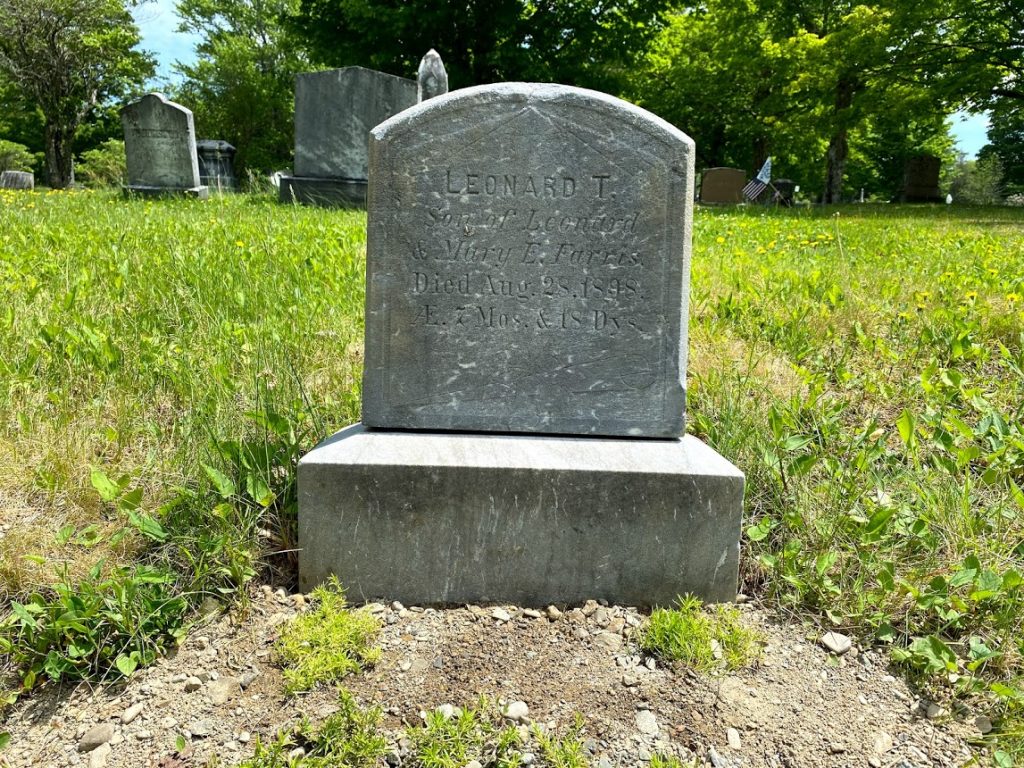
The Gravestone above reads:
Leonard T.
Son of Leonard & Mary E. Farris
Died Aug. 28 1898
AE 7 Mos & 18 Dys
The grave pictured above is in the Calais Cemetery, between the Beckett lot which is on the main avenue on the left about halfway up the hill and the Rutherford lot which is behind the Beckett lot.
The infant’s stone is not at all unusual in the cemetery, children often died in infancy in the days before vaccines and antibiotics, sometimes several members of a family succumbed in typhoid, diphtheria and cholera epidemics but Leonard’s grave is a bit of a mystery. Its location is marked by a lonely gravestone between two large lots wherein lie the remains of many Becketts and Rutherfords – both notable local families, the infant Leonard unrelated to either family and, in fact, to anyone buried in the cemetery.
That it was long ago forsaken was noticed by a frequent visitor to the Beckett lot who has generously adopted the grave and now maintains it. The Historical Society was asked what we know about the Farris family and the infant, curious why this little boy was, seemingly, left to spend eternity alone, surrounded by strangers. While we cannot answer the deeper questions we are, with the help of Sharon Howland whose research skill and archives are without rival, able to give some account of the boy’s family which in truth is an account of an unhappy and unfortunate family.
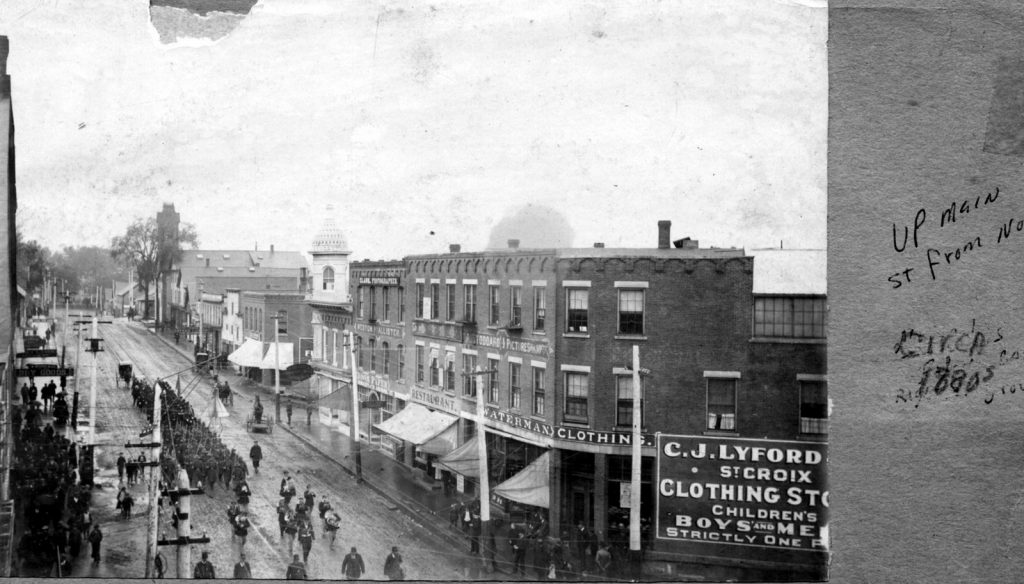
The photo above shows the corner of Main and North Streets in Calais in the 1890s. The large brick block to the right was known the Calais Federal block, now the Camden Bank, although it is now greatly changed.
Leonard and Mary Farris are first mentioned in local documents in the 1896 Calais business directory, listing him as a clerk at Frank Macartney’s clothing store at the corner of Main and North Streets. There were a number of clothing stores in the brick block shown above so it is reasonably certain Leonard worked in one of those stores.
Leonard and Mary were married on May 12, 1896 in Calais by Reverend McCully, he was 27 and she 17, the daughter of Katherine Bridges of Meddybemps. According to the directory they lived on Church street near the corner of Academy Street. Their first child, the boy in the grave, was born a year and a half later on January 10, 1898 and, as the gravestone indicates, survived for only 7 months. He spent those seven months in the Church Street home, which for those of us who attended grade school on Academy street, would have been in view nearly every day when we rushed through the school’s front doors at the final bell either on our way home or, if we had a penny or two, across the street to the conveniently located candy store. At that time, the 1940s and 50s, there were probably people still living at the upper end of Church Street who would have remembered the Farris family.
It is possible young Leonard was sick from birth, the cause of death listed on the death certificate is “acute indigestion” for which he would have been treated by a local doctor at home, there was no hospital in Calais, and he almost certainly died at home. A gravedigger would have been paid to dig the grave, a stone purchased and the boy interred. Leonard and Mary no doubt grieved his death but within a few months Leonard was also grieving the loss of his father, also Leonard Farris, in Lowell Massachusetts. The father’s obituary says he was 69 and a native of Calais although we can find no record of him living in Calais.
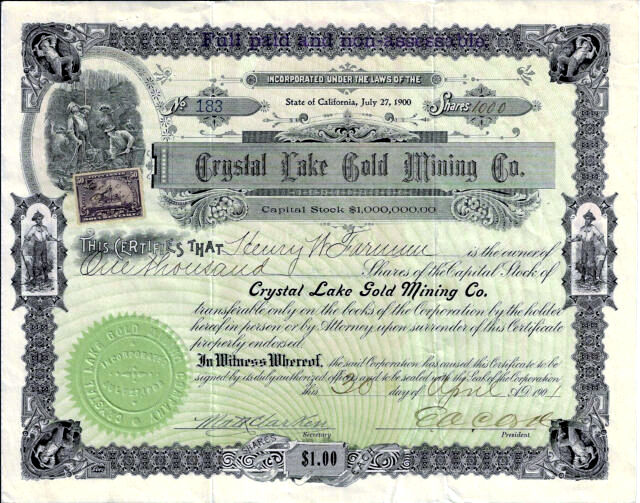
After the boy’s death, the family remained childless until 1900. Leonard had by then moved up the economic ladder from store clerk to “stockbroker” according to the Calais census of 1900. This job description is a bit deceptive – Leonard was not short-selling Gamestop, trading in Google options or going all in on Bitcoin. He was dealing in the shares of gold and silver mining companies which, it was claimed, were in the process of striking it rich out west. It is almost certain many locals from both sides of the border bought shares in these companies from Leonard. The Crystal Lake Gold Mining Company in California was one of several mining companies whose shares were purchased locally.
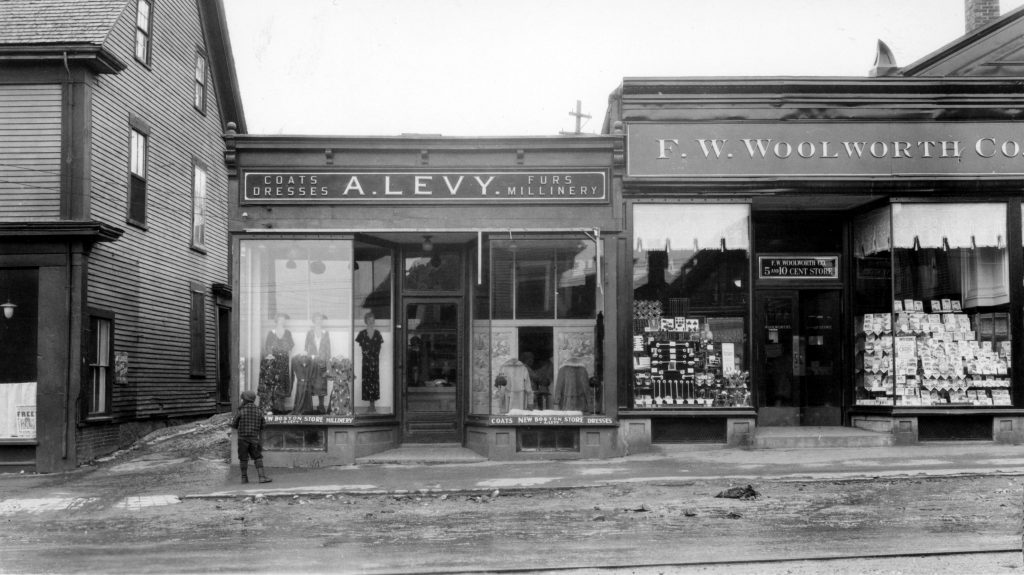
While Leonard’s stockbroker office didn’t overlook the East River or Wall Street, it did have a view of the St. Croix River. The 1901 Calais business directory lists the Farris brokerage firm as occupying 125 Main Street Calais shown above at a later date when it was Levy’s Ladies Clothing Store. It had a view across Main Street of the St. Croix River but by 1909 that view would be blocked by the new Calais Post Office.
A history of the gold and silver mining scams of the early 1900’s would require volumes so suffice it to say St. Croix Valley residents lost several fortunes on these ventures. In fact St. Croix Valley residents eventually became the owners of the assets of Crystal Lake Mining after foreclosing on the company’s defaulted bonds. The Todd family alone lost the equivalent of a million dollars and the Eaton and Murchies didn’t escape unscathed either, although if John Jackson, feisty editor of the Calais Advertiser had still been alive, he would have editorialized that the families would simply cut their workers wages or raised prices at the company stores until they recovered their losses. The Historical Society has a folder of legal documents on the Crystal Lake Gold Mining and Jackson and Lakeview Mining companies which details the extent of the damage these scams did to local pocketbooks.
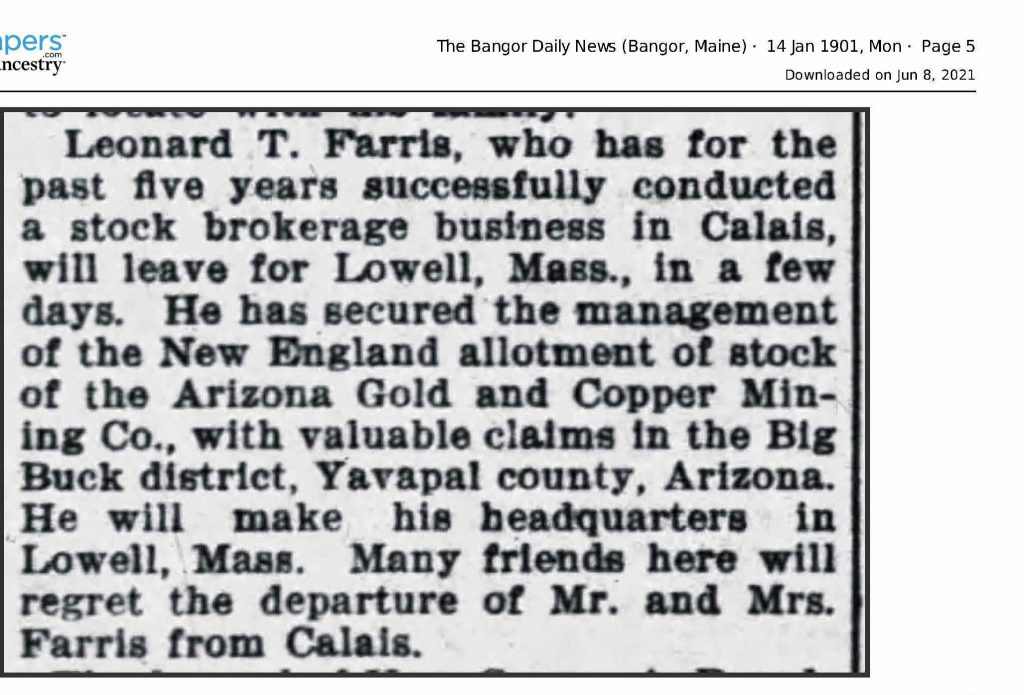
Leonard and Mary’s second son, John was born on March 24, 1900, just before the family’s relocation to Lowell and before the bottom fell out of the mining stocks. Quite possibly, the locals fond memories of the Farrises and Leonard’s sage investment advice may have later become somewhat jaundiced by this point. Nonetheless, Leonard remained a “stockbroker” according to Lowell census records but tragedy followed the family to Lowell.
On March 9, 1902 their son John died of “paralysis”. They were again childless until 1903 when a third son, Russell Watson Farris was born followed in 1906 by a daughter Irene. Unfortunately, by 1910 the bottom had fallen out of the gold and silver mining swindles and this may, we speculate, have created serious problems in the Farris household. Leonard died in 1912 at the age of 45 of a “stomach hemorrhage” and the “beginning of cirrhosis of the liver” and Mary followed a few months later dying of “disease of the heart” contributed to by “alcoholism”. She was 34. There was no indication they had ever returned to Calais to visit the grave of their first child.
Russell and Irene were now orphans and they were split up to live in separate households with siblings of their father in the Lowell area. Thereafter Irene drops almost entirely from the historical record but not so Russell who goes on to a life of crime, fame as New York’s “Tuxedo Burglar” and an early death.
Russell’s first known brush with the law occurred in 1929 in Atlantic City although it is very unlikely he waited until 26 to break the law. It was, however, the first time he was prosecuted. We are not aware of his sentence in the 1929 case but it must have been a short one. Perhaps he was able to convince the court his wife was responsible. The article below appeared in the New York Daily News on August 31, 1929. Russell was not a petty thief- $40000 dollars in 1929 is worth $630000 today.
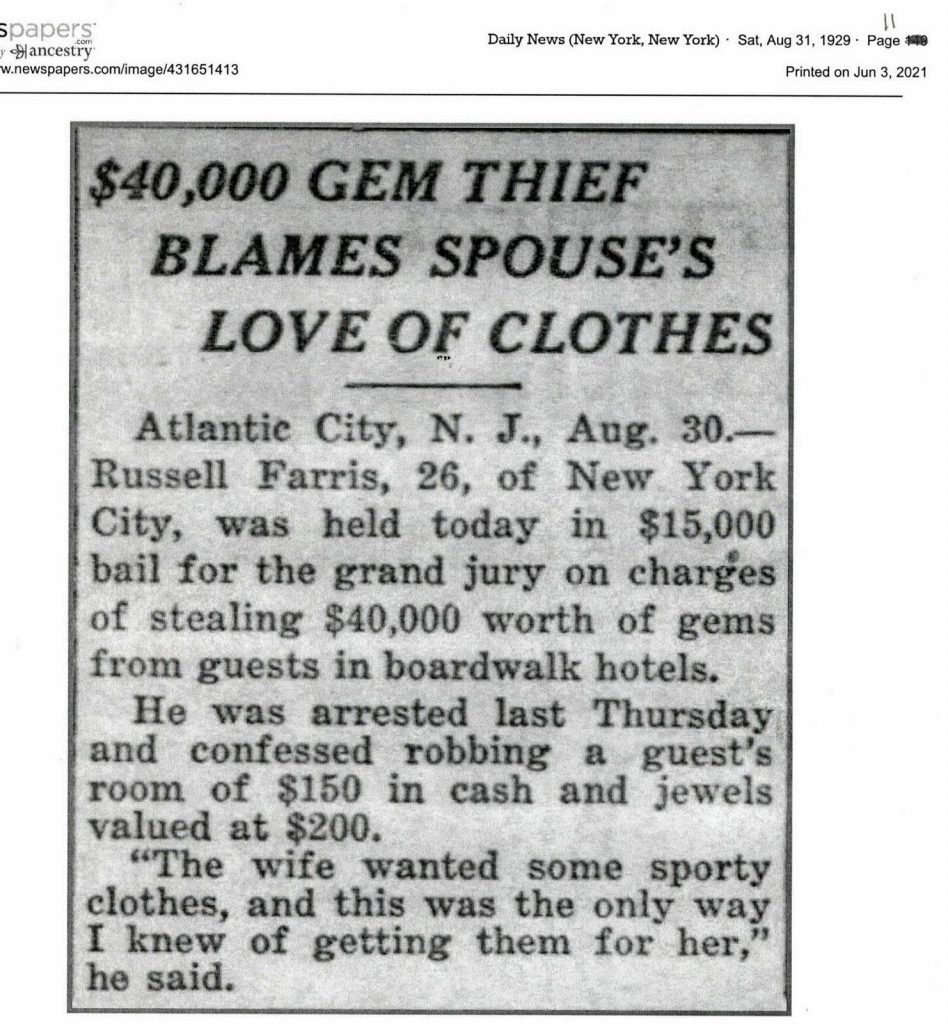
The Union Standard of Brooklyn described the burglary as follows:
Standard Union Brooklyn: September 1929:
N.Y. Man Indicted
Mays Landing, N.J. Sept 18
Four indictments charging burglary were returned by the Atlantic City Grand Jury here against Russell Ferris, 26 years old, of 150 East Seventy-eighth Street, New York City. It is alleged he obtained more than $40000. in a series of burglaries in beach front hotels at Atlantic City over a period of four months.
Russell served a fairly short sentence on these charges and by 1930 he was back on the street and apparently unreformed. New York Daily News March 1931:
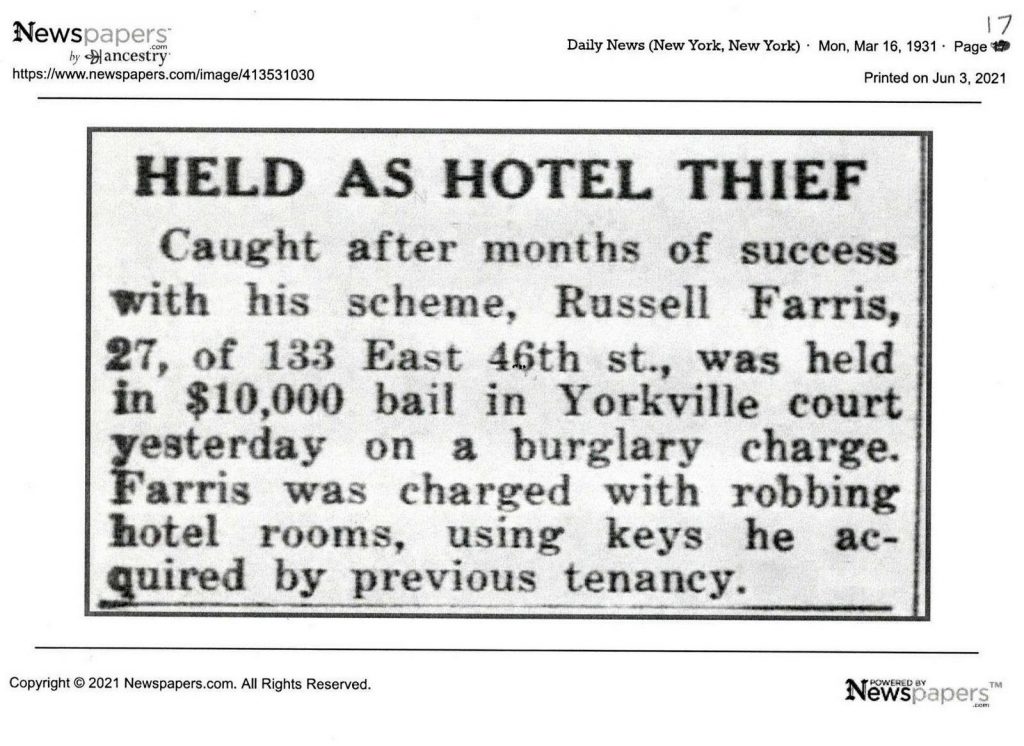
HELD AS A HOTEL THIEF
Caught after months of success with his scheme Russell Farris, 27, of 133 East 46th St., was held in $10,000 bail in Yorkville Court yesterday on a burglary charge. Farris is charged with robbing hotel rooms, using keys he acquired by previous tenancy.
We do know Russell was sentenced on this occasion to three years in Sing Sing but he was released for good behavior a few months early. He apparently decided not to reform but to up his game and become a smarter and more professional thief. Sadly the results were even more disastrous.
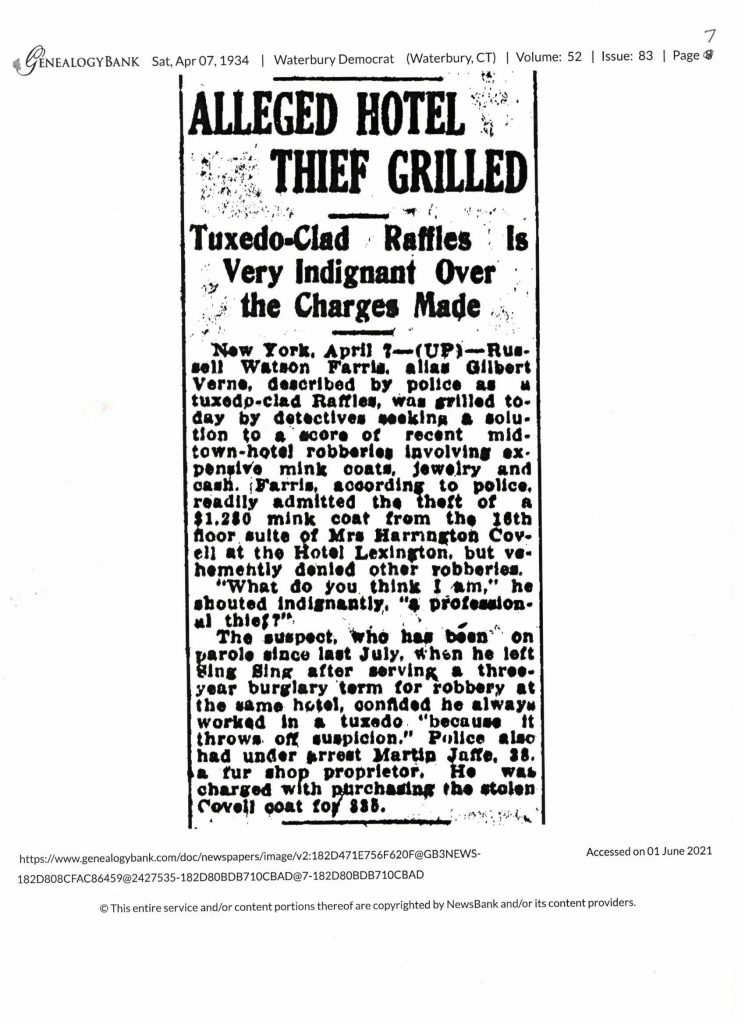
Waterbury Democrat: April 7, 1934
ALLEGED HOTEL THIEF GRILLED
TUXEDO-CLAD RAFFLES IS VERY INDIGNANT OVER CHARGES MADE
New York, April 7-UP- Russell Watson Farris, alias Gilbert Verne, described by police as a tuxedo clad Raffles, was grilled tonight by detectives seeking a solution to a score of recent mid-town robberies involving expensive mink coats, jewelry and cash. Farris, according to police, readily admitted to the theft of a $1,250. mink coat from the 16th floor suite of Mrs. Harrington Covell at the Hotel Lexington, but vehemently denied other robberies.
“What do you think I am” he shouted indignantly, “a professional thief?”
The suspect, who has been on parole since last July, when he left Sing Sing after serving a three year burglary term for robbery at the same hotel, confided he always worked in a tuxedo “because it throws off suspicion”. Police also had under arrest Martin Jaffe, 38, a fur shop proprietor. He was charged with purchasing the Covell coat for $335.
The end for Russell was more sadder and quicker than anyone could have imagined. It is described in the Brooklyn Times Union of May 11, 1934.

May 11 1934: Times Union Brooklyn
LEAPS T0 DEATH
Dives Out Window Awaiting Doctor’s Examination; Nattily Dressed in Robberies.
The ancient Criminal Courts Building and the adjoining Tombs in Manhattan were thrown into a high state of excitement today when a prisoner jumped to his death from a doctor’s office on the second floor of the courthouse. The prisoner, Gilbert Verne, 30, of 63 West 73d st., Manhattan, was known as the “tuxedo burglar,” whose boast was that he could easily gain access to fashionable hotels if he were dressed in the proper style. He landed on Centre st, narrowly missing several pedestrians, and was taken to Beekman Street Hospital, where he died.
Verne pleaded guilty on May 3 to burglary, charged with having entered a room In the Hotel Lexington, Manhattan, and stolen a mink coat and cigarette case. He was arrested on April 6, when he tried to sell the fur coat for $35. He was to have been sentenced by General Sessions Judge Collins on May 15, and today was brought across the Bridge of Sighs from the Tombs for the customary psychiatric examination. The keeper left Verne alone in the doctor’s office. Without warning, Verne walked to the open window and jumped to the street. Word quickly passed through the old court building that a prisoner had attempted to escape and a careful check was made on all prisoners in the court building and in the Tombs. Verne had written a letter to Judge Collins, asking for leniency. He said he had tuberculosis and had pleaded guilty to save his sweetheart, Helen, from embarrassment. Verne was also known as Russell Farris. He served a term in 1931 for attempted grand larceny and had done time in the reformatory.
Of the entire family, the only one to survive beyond 44 was Irene. She died at 93 in Sarasota Florida. Her obituary describes her as a homemaker with step children, 10 grandchildren and 10 great-grandchildren. She appeared to have led a normal life, being a member of the Daughters of the American Revolution and other civic organizations. She had certainly experienced enough tragedy in her life to value what is important. Memorial donations were directed to the Mamasota House for the Blind in Sarasota.
As Paul Harvey often remarked – “That’s the rest of the story” of the family of Leonard T. Farris. If visiting the cemetery you might consider dropping by the grave. Perhaps a flower would be in order.
